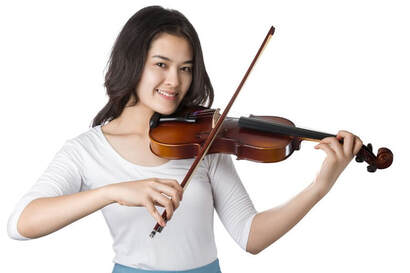|
Tricia Hayton, Registered Physiotherapist Habits of musicians are often compared to elite athletes. They practice for hours a day to perfect their skills to achieve success in a very competitive environment. Like the athlete, these habits can cause damage to the body and result in injury. Injuries that mean time away from gigs, income, and in the worst-case scenario, a change of career. So, what can be done? There are two main factors that contribute to overuse injuries in musicians. 1. Repetition: As it sounds, this means that the body is performing an act over and over again until it is perfected. However, damage begins when there is not adequate rest. Initially, the musician will complain of fatigue and tension near the end of the session. This develops into pain during the session, and then lingering pain when one is away from their instrument. The most common overuse injury is tendonitis. 2. Asymmetry: This refers to the need to hold the body in an unbalanced position for an extended period. An example is a violinist tilting their head to support the instrument as they play. This can alter the movement patterns of a joint, increasing the risk of injury. For example, our violinist may develop a nerve impingement on the side towards her violin due to neck posture and reduced space for the nerves to travel from the neck to the arm.  What are the warning signs? 1. Fatigue near the end of a practice session. This can also be felt as tension at the end, or in between sessions. 2. Tingling in the hand or arm. There are some overuse injuries that can cause neural compression (thoracic outlet syndrome, for example). This compression will often begin with a tingling in the hand and arm that is relieved with a change of position. 3. Weakness of the hand or the feeling of being uncoordinated. 4. Fatigue or discomfort when carrying instrument from a gig or practice. What can be done?
1. Movement Screen: A physiotherapist or sports chiropractor can complete a movement screen. This will give indications where muscle imbalances are building. Exercises will then be given to correct the imbalance (to go back to my athlete comparison – this is the same as cross training). 2. Postural education and core strengthening. 3. Pain management: sometimes you just need to get through a busy time – whether it is a testing period, recital, or short running performance, then you will take rest and let the body heal. Pain management with modalities, acupuncture, or manual therapy can help through this time. Please realize this is not a long-term solution. 4. Technique analysis: looking at your movement screens together with a musical teacher or coach, the method that you use to hold or manipulate the instrument can be slightly altered. Like athletes, musicians may be nervous that this will alter performance. But after a very short adjustment period, performance commonly improves. Do you have more questions regarding musician’s injuries? Please leave a comment or give us a call.
0 Comments
Your comment will be posted after it is approved.
Leave a Reply. |
Physio Sport Med
Serving all of Oakville in the Uptown / Dundas-Trafalgar Core. Archives
May 2025
Categories |
- Info
- Book Now
-
Team
-
How We Treat
- Sport Medicine Consultation
- Manual - Exercise Physio
- Sport Physiotherapy
- Tissue Injections
- Acupuncture
- Vestibular Physiotherapy
- Osteopathy
- Chiropractic Care
- Concussion Program
- Shockwave Therapy
- Female Pelvic Health
- Male Pelvic Health
- Registered Massage Therapy
- Nutrition Consultation
- On-Field Therapy Coverage
- Custom Orthotics
-
What We Treat
- Sports Injuries
- Low Back Pain
- Osteoarthritis
- Motor Vehicle Accident
- Sprains
- Muscle Strains
- Concussion
- Rotator Cuff
- Tendonitis
- Neck Pain and Headaches
- Hip Pain
- Shoulder Pain
- Elbow, Wrist and Hand Pain
- Foot and Ankle Pain
- Post Surgical Rehabilitation
- Gait and Balance Disorders
- Knee Injuries
- Pelvic Floor Conditions
- Blog

 RSS Feed
RSS Feed